Sashiko Japanese embroidery
![]()
Sashiko is Japanese stitching or embroidery that has a long history.
There are many classic patterns which are geometric. Some are simple: some are complex. When you see a sashiko pattern, you might be mesmerized or confused. It is like you were in a labyrinth. A pattern emerges and disappears. It is said that such confusing patterns can prevent evil spirits and bring in good luck.
But sashiko was a simple line stitching originally.
It is said that sashiko started about 200 or 300 years ago. In those days, cotton was a rare fabric. Many farmers wore clothes made of hemp or other plants. The quality of such fabric was poor and could be worn out easily. People stitched clothes to make them strong or repair the torn part.
What’s more, stitched clothes were not only strong but also warm.
There are 3 famous sashiko styles. Shonai sashiko(Yamagata Prefecture), Kogin sashi(Aomori Prefecture), Nanbu hishi zashi(Aomori Prefecture). Both Yamagata and Aomori are located in the Tohoku Region, where it snows a lot in winter. People in this area made sashiko stitches to make warm clothes.
But over the years, people came to include hopes and wishes in sashiko stitches and various patterns were invented.
Today, we see many traditional sashiko patterns which are believed to be good luck charm and auspicious.
Hemp leaf
![]()
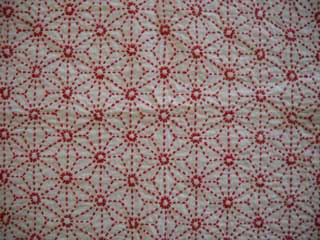
Hemps grow fast. In older days, ninja planted hemps. They grow fast and within some weeks they became a size when ninja could practice jumping over them. Even today, this pattern is often used for baby’s clothes, especially diapers. Parents choose the pattern in the hope of baby’s good growth and health.
Seven treasures of Buddhism
![]()
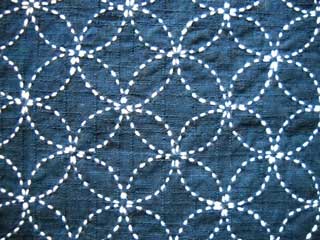
Seven treasures are gold, silver, pearl, glass, agate, tridacna, and crystal. This pattern means affluence.
Linked counter weights
![]()
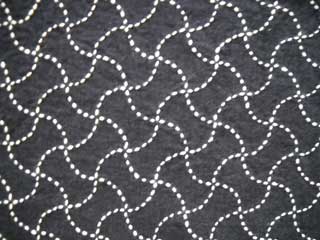
This pattern is a variation of seven treasures of Buddhism. It also is the symbol of affluence.
Woven bamboo
![]()
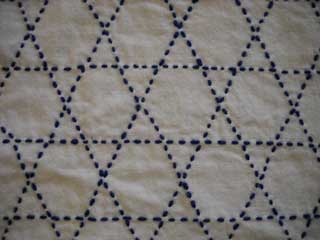
It is believed that this pattern can fend off evil spirits.
Blue waves
![]()
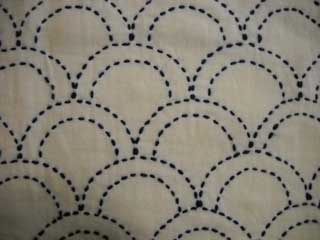
This pattern depicts ocean waves. People in the Tohoku Region believed that the waves led to Mt. Horai, which is an imaginary island located between China and Japan, where immortals live.
Sea urchin
![]()
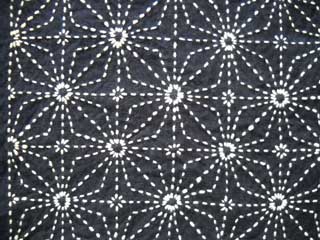
This pattern is designed based on the figure of a sea urchin and often seen on the clothes in the Shonai area, which faces the Sea of Japan. It was a good luck charm for people who worked with the sea.
Persimmon flower
![]()
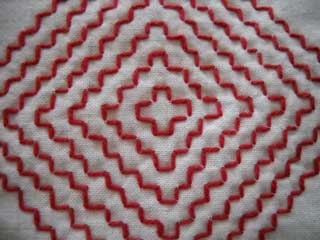
It is believed that this pattern can eliminate bugs and bring good harvest.
Rice pattern
![]()
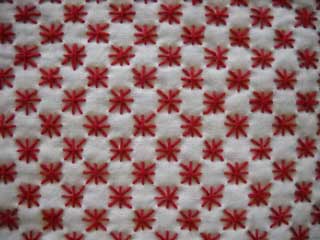
It represents the Chinese character "rice". People hoped for good rice harvest with this pattern.
Coin
![]()
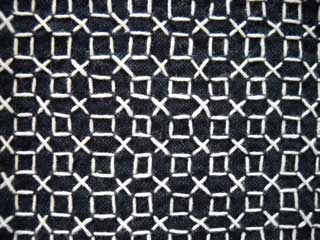
Each square means a coin. They are enclosed by lines. This pattern means money will not go out of the house.
